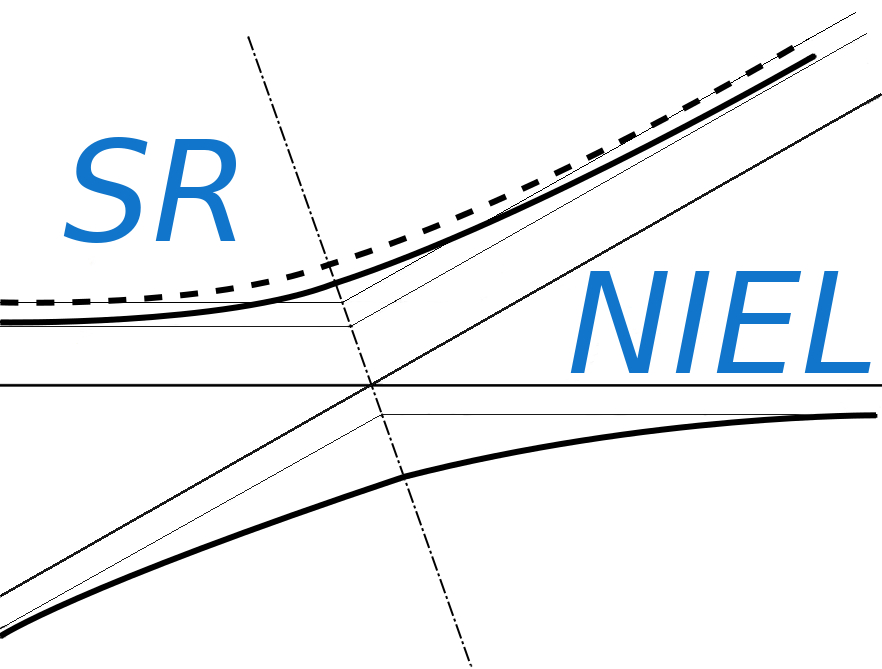The current web calculator for electronic stopping powers exploits a) the "SRIM Module.exe" (with an upper energy limit of 5 GeV/amu) included in SRIM 2013 code (SRIM Tutorials) - whose maximum available energy is 10 GeV/amu -, i.e., the used electronic stopping power tables are those provided by "SRIM Module.exe" code with a low energy limit of 1 eV; and b) the energy-loss equation (i.e., Eq. (2.18) in Sect. 2.1.1 of [Leroy and Rancoita (2016)]) as discussed here. The overall approach is referred to as SR-treatment framework.
EXAMPLE:
Electronic Stopping Power for Protons in Silicon:
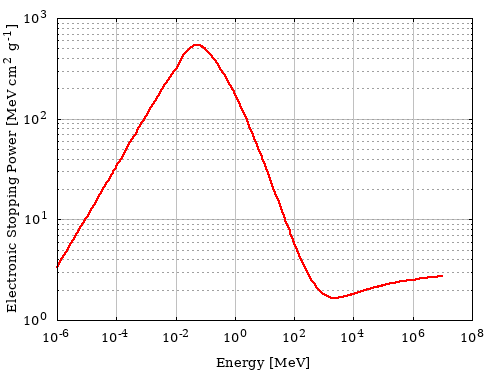 Electronic Stopping Power for Protons in GaAs:
Electronic Stopping Power for Protons in GaAs:
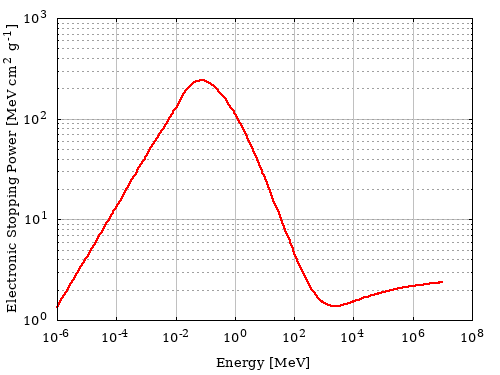 Electronic Stopping Power for Protons in Water Liquid:
Electronic Stopping Power for Protons in Water Liquid:
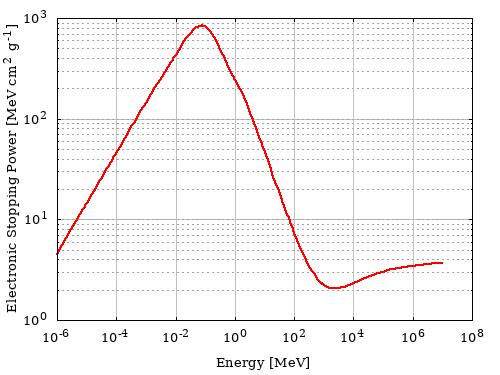 NOTE:
Output table and graph include the electronic stopping power in units of Mev cm2/g (i.e., the mass electronic stopping power).
The lower energy limit is 1 eV
Target selection for the results obtained in the EXAMPLE section
Selection for Protons in Silicon:
NOTE:
Output table and graph include the electronic stopping power in units of Mev cm2/g (i.e., the mass electronic stopping power).
The lower energy limit is 1 eV
Target selection for the results obtained in the EXAMPLE section
Selection for Protons in Silicon:
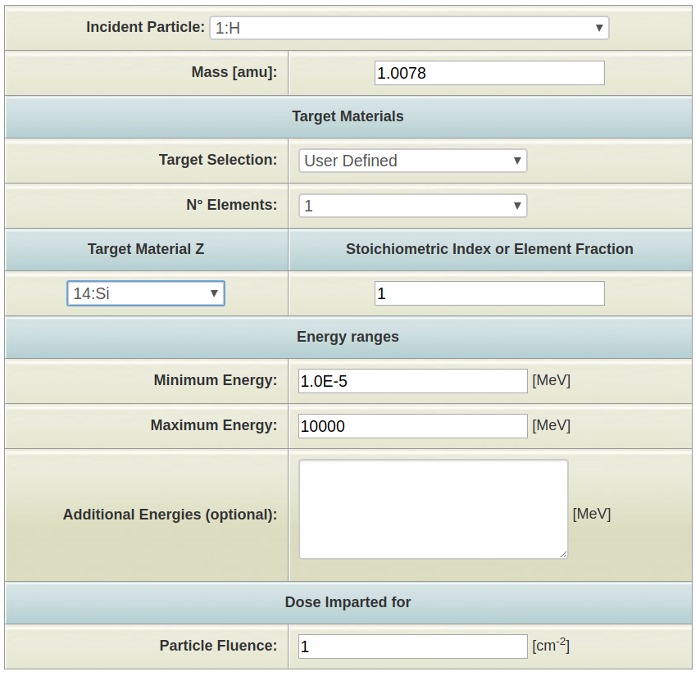 Selection for Protons in GaAs:
Selection for Protons in GaAs:
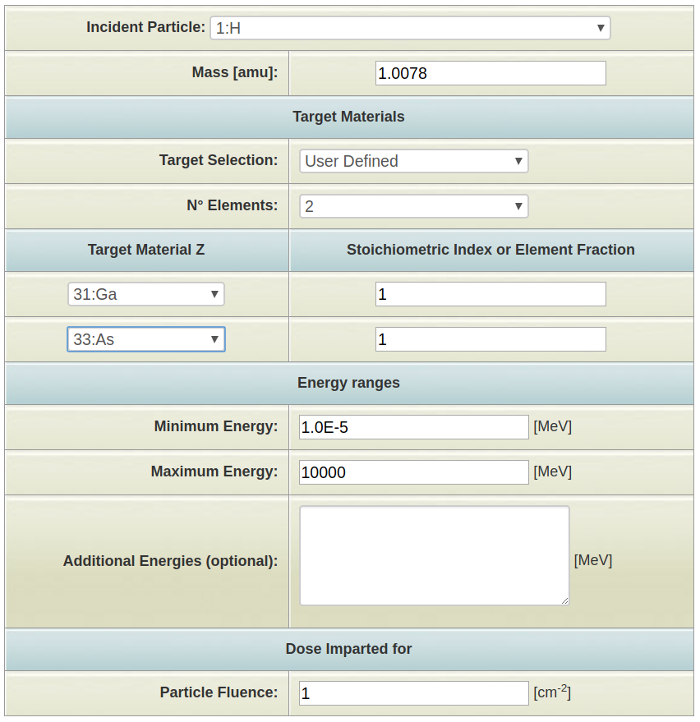 Selection for Protons in Water Liquid:
Selection for Protons in Water Liquid:
 In SRIM, gas targets are dealt differently from those solid. User can select the target as a gas only for following elemental targets: H, He, N, O, F, Ne, Cl, Ar, Kr, Xe, Rn.
FINAL REMARK:
In the present electronic stopping power to dose converter, the energy lost by the incoming particle is assumed to be fully absorbed by the medium - for instance, the medium is supposed to to be thick enough to fully absorb the kinetic energy of emitted delta rays - and the particle energy is almost constant while traversing the absorber.
For few compounds belonging to the ICRU list the parameters employed for the energy loss formula (including those for the densiity effect) are reported in Table II of Sternheimer et al. (1984).
In SRIM, gas targets are dealt differently from those solid. User can select the target as a gas only for following elemental targets: H, He, N, O, F, Ne, Cl, Ar, Kr, Xe, Rn.
FINAL REMARK:
In the present electronic stopping power to dose converter, the energy lost by the incoming particle is assumed to be fully absorbed by the medium - for instance, the medium is supposed to to be thick enough to fully absorb the kinetic energy of emitted delta rays - and the particle energy is almost constant while traversing the absorber.
For few compounds belonging to the ICRU list the parameters employed for the energy loss formula (including those for the densiity effect) are reported in Table II of Sternheimer et al. (1984).
 Electronic Stopping Power for Protons in GaAs:
Electronic Stopping Power for Protons in GaAs:
 Electronic Stopping Power for Protons in Water Liquid:
Electronic Stopping Power for Protons in Water Liquid:

